SECURE 2.0 for 2024: What you really need to know
Here’s What You Really Need to Know:
- There are staggered effective dates for provisions of SECURE 2.0. Most of the provisions that start on January 1, 2024 are optional provisions, meaning that plans are not required to implement the provision.
- One provision that is required is related to long-term part-time employees (LTPT) employees. Both SECURE Act of 2019 and SECURE 2.0 included requirements for LTPT employees which commences January 1, 2024 and is clarified in proposed guidance from November 24, 2023 (as further discussed below).
- The provisions for Roth catch-up contributions that were supposed to start on January 1, 2024 were delayed until January 1, 2026 due to guidance from the Internal Revenue Service (IRS).
Let’s Dive In…
Structurally, SECURE 2.0 is bipartisan legislation, which is the compilation of three bills from the House and Senate. There are three key things to consider when reviewing the legislation:
- Effective dates: The effective dates of the provisions are staggered. There are some provisions in SECURE 2.0 that started as soon as the legislation was signed into law on December 29, 2022, and there are other provisions that don’t commence until a future effective date.
- Plan types and limited circumstances: There are some provisions that only apply to certain plan types or only apply in very limited circumstances; for example, start-up plans only or 457(b) plans only.
- Required versus permissive: Provisions are either required or permissive, meaning that the provision only applies if the plan elects that provision and many provisions in SECURE 2.0 are simply optional. However, if the plan decides to implement an optional provision, then the plan needs to ensure that the operations and the plan document align. This all requires coordination with those involved in running the plan.
For 2024, it is important to consider the following as it relates to recent guidance for SECURE 2.0, required provisions and optional provisions:
Technical Corrections
There were undoubtably errors in combining the three bills that came together to form SECURE 2.0. One of the errors was the elimination of catch-up contributions starting in 2024. When Congress drafted Section 603 for the Roth catch-up provision, they eliminated a sub-paragraph of the Internal Revenue Code (the Code) that would have removed all catch-up contributions. Additional legislation was required to correct the “glitch,” so this technical correction as well as others have been drafted and put into proposed legislation that Congress is now considering. Most likely this will get attached to a funding bill early in 2024 or otherwise may be passed at the end of 2023 given the urgency of the issue. Until then, the IRS did include the intent to maintain catch-up contributions as part of its guidance in August 2023 related to Roth catch-ups.
LPTP Employee Guidance
Think seasonal workers, hospitality, retail, and similar positions. SECURE Act of 2019 changed the eligibility requirements for 401(k) plans. With a few certain exceptions, starting in 2024, plans no longer can have a service condition that prevents employees from making their own salary deferrals if they have worked at least 500 hours for an employer for three consecutive years. Fast-forward to SECURE 2.0 which changed that requirement to cover employees that have worked at least 500 hours for an employer for just two consecutive years. On November 24, 2023, the IRS issued guidance related to when someone qualifies as a LTPT employee and if so, this proposed regulation outlines the special rules for vesting, testing and other items for when someone is a LTPT employee.
Roth Catch-up Guidance
In August 2023, the IRS gave plan sponsors a surprise gift, which was a reprieve from implementing what is known as the “Roth Catch-up” provision. Section 603 of SECURE 2.0 requires that all catch-up contributions for qualified retirement plans are subject to Roth tax treatment, except for participants with Social Security tax wages of $145,000 or less (indexed for inflation). This provision was effective starting January 1, 2024. The IRS’s announcement meant that, practically speaking, the provision will now be effective January 1, 2026.
Roth Employer Contribution
Speaking of Roth provisions, there was an optional provision that started at the date of enactment in Section 604, which would allow employer matching or nonelective contributions to be Roth contributions. This optional provision is not widely used at this time for a few reasons. First, there are outstanding tax questions as to how this should be captured on either a W2 or 1099R at the end of the year. Second, there are questions as to how payroll providers and recordkeepers will update their systems to accommodate this provision. Until there is additional guidance from the IRS on this provision, it is not anticipated to be widely utilized (at least not at this point given the circumstances), though it is technically an available provision plans can add.
Optional Provisions for 2024
As mentioned above, there are many provisions of SECURE 2.0 that are optional provisions. For example, the following optional provisions become available starting January 1, 2024: student loan payments as elective deferrals for matching (Section 110); emergency withdrawals (Section 115); emergency savings account (Section 127); updating dollar limit for mandatory distributions to $7,000 (Section 304); and domestic abuse withdrawals (Section 314).
From the practical perspective, one plan sponsor recently asked, “But what if a participant knows about a provision and demands we add it to our plan?” Great question, but just like the participant that demands the gold fund or a 10% matching contribution, these are all decisions that the organization/business can make, and then the fiduciaries to the plan can implement those provisions, but only if it is in the best interest of the participants overall. The plan is not obligated to implement any optional provision. Consider these provisions and determine if they might be a benefit to your participant population and document those decisions, but optional provisions are just that – optional.
Action Items for Plan Sponsors
Plan sponsors are encouraged to continue to pay attention to SECURE Act of 2019 and SECURE 2.0 even though it may seem like a nagging headache. Here’s a few action items to consider:
- Determine if there are any required provisions that apply to your plan that need your attention for 2024 such as the LPTP employee provision.
- For those optional provisions that may interest your organization to attract and retain employees, for example, discuss with your service providers including your recordkeeper and payroll provider to determine if they can support such provisions yet (and if not, when those provisions will be available).
- For optional provisions that are available, talk to the business stakeholders at your organization and determine if they will add available provisions, as some of the optional provisions may have financial impacts on the organization.
- Work with a knowledgeable plan advisor or consultant to assist you as you continue to monitor for additional guidance and updates from the IRS and DOL, which will likely continue for months and years to come.

